Realizing Children’s Rights in Paraguay
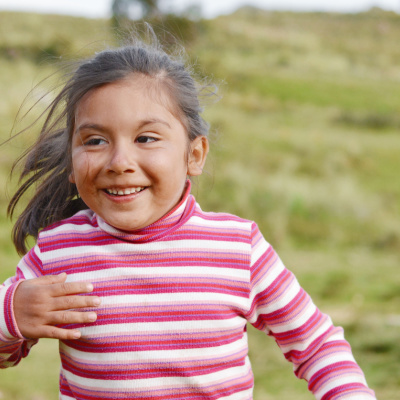
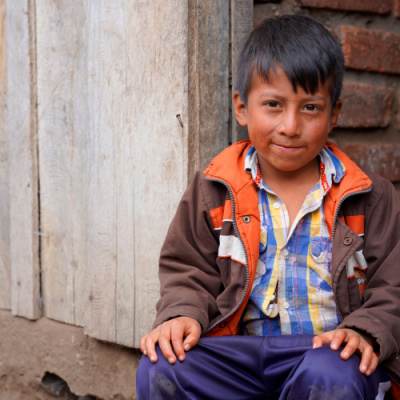
Paraguay is a landlocked country located in the northern part of South America. With a population of 7.3 million, 35 percent are children. The main issues which affect the children of Paraguay are related to the widespread poverty in the country which is the entry point leading to several other risk factors, such as child labour, child sex tourism, child marriage, early school dropouts and malnutrition.

Children’s Rights Index: 6,83 / 10
Red level: Difficult situation
Population: 7.3 million
Pop. ages 0-14: 29%
Life expectancy: 74 years
Under-5 mortality rate: 19 ‰
Paraguay at a glance
Paraguay is a landlocked country in the northern portion of South America neighboring Argentina to the south and southwest, Brazil to the east and northeast, and Bolivia to the northwest. With an estimated population of 7.3 million, nearly 63 percent live in urban areas and 37 percent live in rural areas (UNICEF, 2021).
The proportion of people living in poverty has risen from 24 percent in 2019 to 27 percent in 2020. People living below the poverty line amount to 0.8 percent in 2020 (World Bank, 2022).Rural poverty continues to be higher than urban poverty (34 percent compared with 23 percent) (UNICEF, 2021). According to the National Statistics Institute (INE, 2020), child poverty increased from 33 percent to 36 percent between 2019 and 2020. In 2020, the government prioritized investment in the health and economic sectors. Public investment in children represented 4.7 percent of the GDP and most of them were dedicated to education and health.
The population of children in Paraguay amounts to 35 percent (2.5 million) and it is composed of 667,000 children aged between 0 – 4 years, 720,000 children aged between 5 and 9 years, 685,000 children aged between 10 and 14 years and 438,000 children aged between 15 and 17 years (INE, 2020).
Paraguay has a more homogeneous population than most other countries in South America. Most Paraguayans are of European and Guaraní ancestry. Guaraní culture is strongly represented through folk art and festivals, and Guaraní was designated an official language of Paraguay in the country’s 1992 constitution. It is a matter of national pride for Paraguayans to converse in Guaraní, which acts as a strong marker of their identity (Encyclopedia Britannica, 2022).
Status of children’s rights [1]
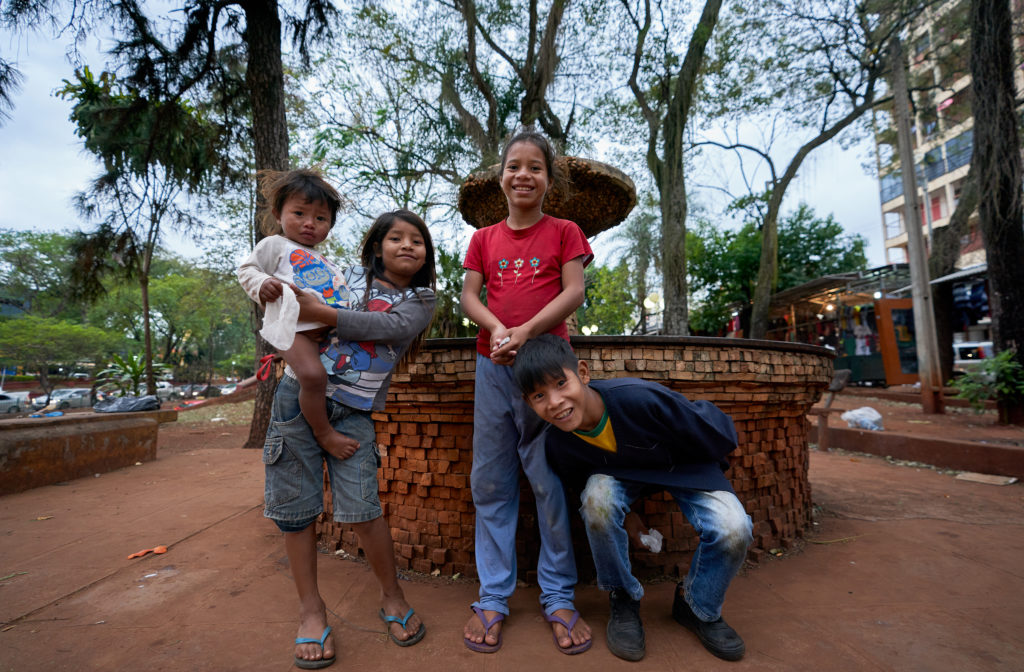
Paraguay is one of the poorest nations in the Americas. Nearly 40 per cent of the population live a life steeped in poverty. Many of them lack sanitation, clean water, electricity and decent housing. The country is currently ranked 111th by the United Nations Human Development Index (HDI), an index that evaluates development in a country by looking at three key indicators: health, income and education (SOS Children’s Villages, 2022).
Children suffer from a lack of access to healthcare, adequate nutrition, education and shelter. As mentioned above, poverty remains to be the root cause. In fact, people living below the poverty line amount to 0.8 percent in 2020 (World Bank, 2022) and rural poverty continues to be higher than urban poverty (34 percent compared with 23 percent) (UNICEF, 2021). Poverty is also additionally responsible for the perpetuation of harmful practices, such as child labour, early child marriage and pregnancy, and violence.
Paraguay has signed a wide range of international treaties aiming to protect the wellbeing of children and to safeguard their rights. For instance, Paraguay ratified the Convention on the Rights of the Child in 1990 and it has adopted also the Optional Protocol on the involvement of children in armed conflict in 2002 and the Optional Protocol on the sale of children child prostitution and child pornography in 2003 (OHCHR, 2022).
Moreover, in 1990 Paraguay decided to adopt the Convention against Torture and Other Cruel Inhuman or Degrading Treatment or Punishment as well as the Optional Protocol of the Convention against Torture in 2005 (OHCHR, 2022). Finally, in order to protect the most vulnerable including girls and children with disabilities, in 1987 Paraguay signed the adoption of the Convention on the Elimination of All Forms of Discrimination against Women and in 2008 it adopted the Convention on the Rights of Persons with Disabilities (OHCHR, 2022).
Despite some general improvements in children’s living conditions since the adoption of the Convention on the Rights of the Child in 1990, Paraguay is still far from reaching significant improvements in regard to children’s rights and protection.
Addressing the needs of children
Right to health
The maternal mortality rate per 100,000 decreased from 162 in 2000 to 68 in 2019, and neonatal mortality fell from 10.9 to 8.4 per 1,000. According to the Ministry of Health (MoH), COVID-19 complications caused 62 percent of maternal deaths in the first semester of 2021. Only half of newborns began breastfeeding within the first hour after birth, and only 31 percent of children under 6 months received exclusive breastfeeding (UNICEF, 2021).
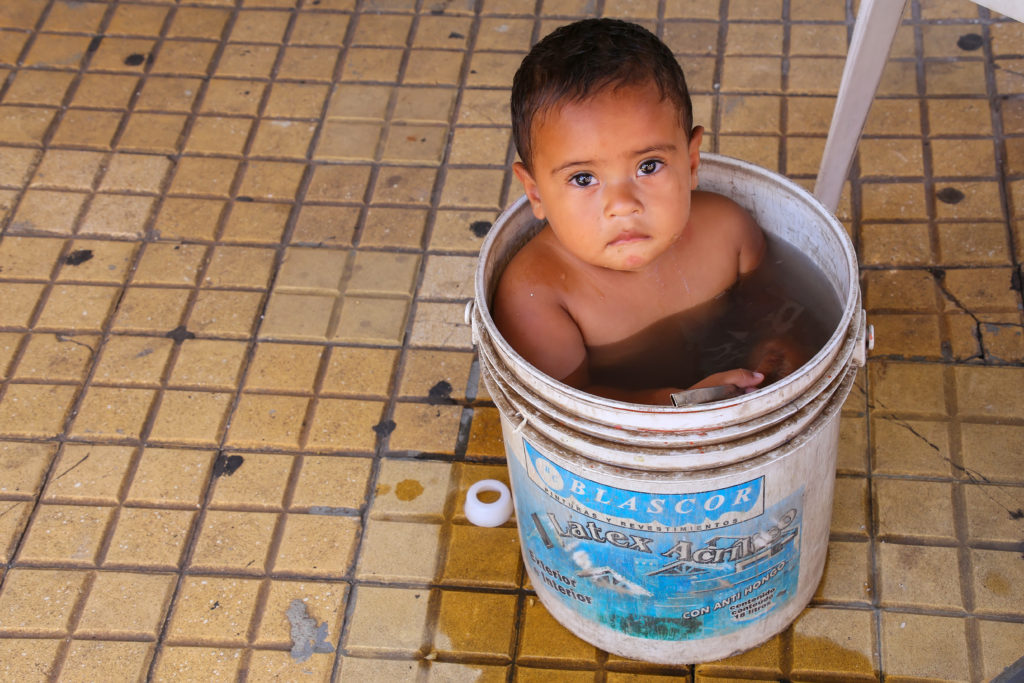
In 2020, underweight in children under 5 years was at 5.3 percent, while wasting affected 5.6 percent, and stunting affected 12.7 percent, with a higher incidence in male children and rural areas. On the other hand, 15 percent of children were overweight, and obesity impacted 7.2 percent of children. It is worth noting that obesity rates were higher among male children and children living in urban areas (UNICEF, 2021). According to the National Statistics Institute (INE, 2020), only 22.9 percent of children are covered by health insurance and most of them live in urban areas (30 percent) rather than in rural areas (12 percent).
In today’s climate, mental health is being rightfully prioritized, especially when it comes to children. In 2020, suicide rates among children, adolescents, and young people groups (10 to 24 years) represented 41 percent of the total number of suicide cases (500). According to the U-Report poll on mental health, “How do we feel?” carried out by UNICEF in Paraguay, 72 percent of adolescents and young people reported feelings of sadness, loneliness, depression, frustration, and stress in the last year; and 55 percent of respondents indicated that mental health was a concern for them (UNICEF, 2021).
Right to identity
Birth registration continues to be a challenge: there were estimated to be 144,000 births, but only three-quarters were registered by the MoH. By 2020, 19 percent of children under 1 year of age were not registered at birth, and this rate is significantly higher for indigenous populations, reaching 42 percent (UNICEF, 2021).
Right to water
In 2019, around 88 percent of households had access to improved water sources through network providers, and 80 percent, to safe drinking water. Some 82 percent had improved sanitation infrastructure, but only 15 percent had access to sanitary sewer systems and 7.5 percent had access to effluent treatment systems.
WASH deficits impact peri-urban and rural marginalized settings more severely, than they do poor and underserved populations, dispersed communities, precarious settlements and indigenous populations. In 2020, public financing of social protection and water, sanitation, and hygiene (WASH) was significantly impacted, dropping by 11 percent and 85 percent, respectively, in 2019 (UNICEF, 2021).
Right to education
In 2021, out of 1, 546,022 students nationwide, 46 percent benefited from face-to-face classes, while the rest attended distance education through web platforms, radio, and hybrid classes. The highest out-of-school rates corresponded to 5-year-old children (20 percent) and adolescents (15 to 17 years) (17 percent). In 2021, 243,000 adolescents (13 to 17 years) were out of school, and 47,000 children (7–15 years) did not enroll back into school, which corresponds to the global 5 percent school dropout rate year on year.
Out of more than 212,000 out-of-school adolescents (15 to 19 years), 47 percent reported that lack of financial stability was the main reason why they did not attend school. The illiteracy rate in Paraguay is 1.4 percent, with a higher incidence in rural areas (1.9 percent) than in urban areas (1.4 percent). According to the Ministry of Education (MoE), 58 percent of children were enrolled in preschool in 2021, a slight drop from 60 percent in the previous year.
The net enrolment rate was 75 percent in primary school, 60 percent in middle school and only 54 percent in upper secondary school. According to the National Statistics Institute (INE, 2020), 93 percent of children between 5 and 17 attended school in 2020: children between 10 and 14 are the most enrolled in schools, followed by children between 5 and 9 (95 percent) and children between 15 and 17 (84 percent).
Risk factors → Country-specific challenges
Child exploitation
Data from the Ministry of Children and Adolescents (MINNA) and the Public Ministry indicate there were over 10,600 cases of violence against children in 2020, a quarter of which were cases of sexual abuse. In the first semester of 2021, almost 1,500 reported cases were linked to sexual violence, an incidence rate of 59 per 100,000 children and adolescents (UNICEF, 2021).
Child sex tourism is an additional feature of violence that affects Paraguayan children. Young girls and boys are often kidnapped and exploited for sexual, commercial, or domestic service purposes. In fact, Paraguay is a source, transit and destination country for child trafficking for labour and sexual purposes, especially within the Tri-Border Area (Argentina, Brazil, and Paraguay). Child domestic workers are particularly vulnerable to trafficking for sexual purposes. Children and adolescents from rural areas are often trafficked into bigger cities such as Asunción or Ciudad del Este for purposes related to the Commercial Sexual Exploitation of Children (CSEC) (ECPAT, 2022).
Poverty
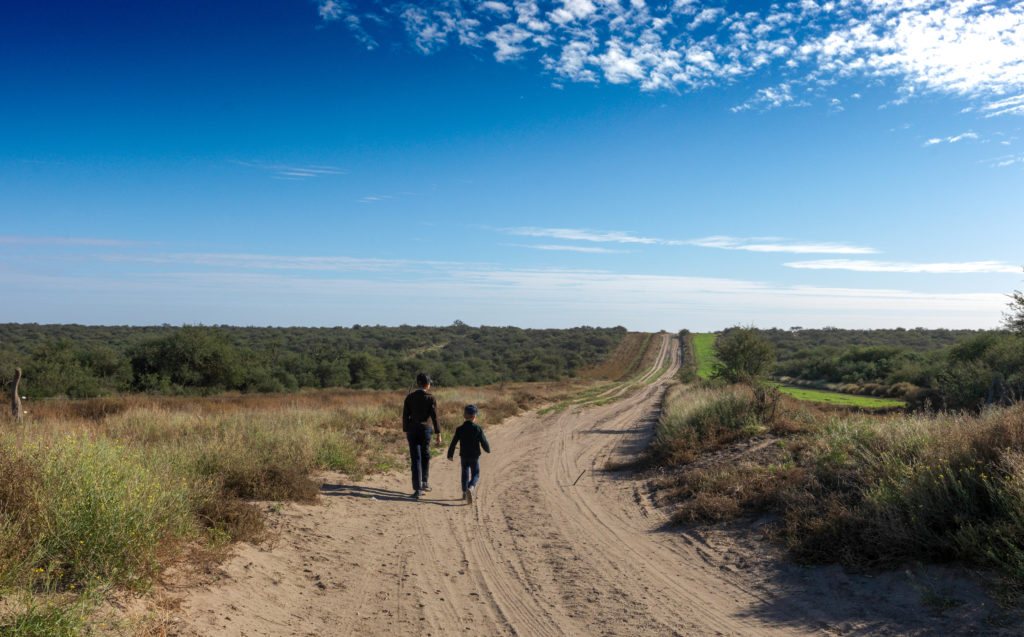
The proportion of people living in poverty rose from 24 percent in 2019 to 27 percent in 2020. People living below the poverty line amounted to 0.8 percent in 2020 (World Bank, 2022). Rural poverty continues to be higher than urban poverty (34 percent compared with 23 percent) (UNICEF, 2021). According to the National Statistics Institute (INE, 2020), child poverty increased from 33 percent to 36 percent between 2019 and 2020.
Understanding that poverty closes several doors in regard to children accessing their rights, one must also consider inevitable consequences as a result such as child labour, violence and abuse. According to the National Statistics Institute (INE, 2020), 36 percent of children (911.000 children) live in poor living conditions, and 6 percent of them live in extreme poverty.
Child labour
Children in Paraguay are subjected to the worst forms of child labor, including domestic servitude, sometimes as a result of human trafficking, as well as debt bondage in cattle raising, dairy farms, and in charcoal factories (Bureau of International Labor Affairs, 2020). Many young children are subject to forced labor, particularly in the Chaco region. Poor children are being trafficked from rural areas to larger cities such as Asunción or Ciudad del Este where they experience commercial sexual exploitation and are treated like modern-day slaves.
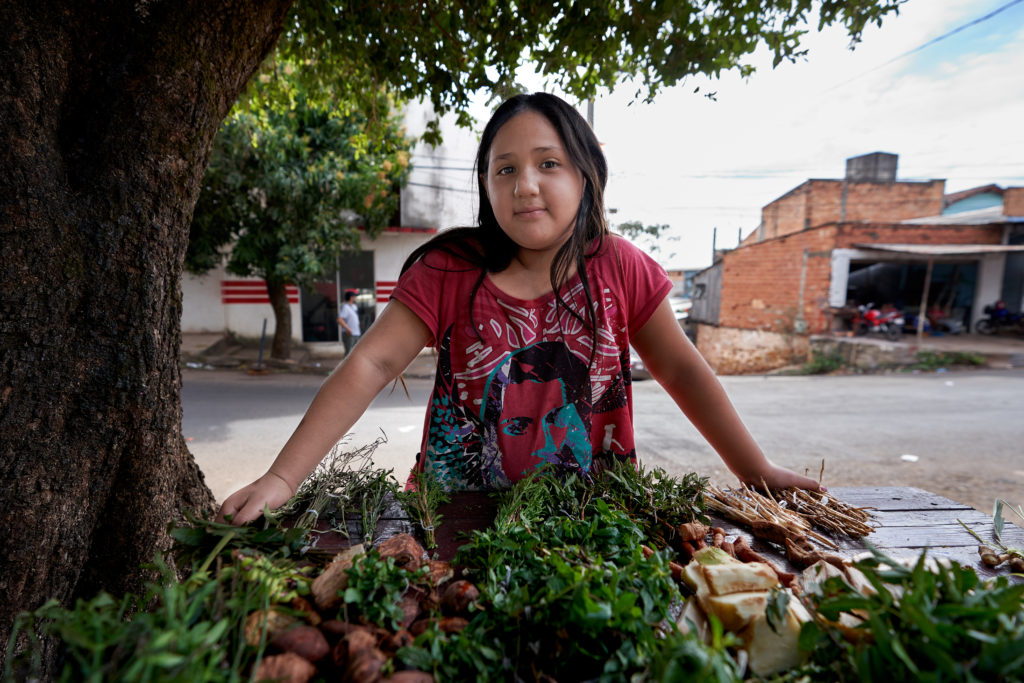
In addition, limited funding for law enforcement agencies and social programs hampered the government’s ability to fully address the worst forms of child labor, particularly in rural areas. Paraguay’s criminal law enforcement agencies also lack the resources to sufficiently identify, investigate, and prosecute cases of the worst forms of child labor, especially in remote areas (Bureau of International Labor Affairs, 2020).
Street children
Many children from poor families either decide or are forced to leave their homes to go to work and live on the streets. This situation causes children to be separated from their families and communications. Their lives are very difficult and since they have no protection they are easy prey for traffickers, who are quick to force them into prostitution or place them with families where they are exploited.
Human trafficking recruiters specifically target street children, knowing that without family support they are particularly vulnerable (SOS Children’s Villages, 2022). Children from rural and indigenous communities also face difficulties accessing and completing their education, including language barriers and inadequate facilities and staff at schools.
However, the government has increased measures against those who traffic children, which has resulted in a decrease in the practice. Living in the street increases the possibility for a child to experience violence or harmful practices or jobs for the purpose of surviving. When it comes to living in the street, having access to adequate nutrition, water, sanitation and protection becomes a challenge and street children may be involved in bad situations with only the aim of surviving.
Child marriages
Paraguayan children are often the object of child marriages. According to Girlsnotbrides (2020), in 2020, 22% of girls in Paraguay were married or in a union by their 18th birthday and 4% were married or in a union before the age of 15. These marriages can have serious consequences on children’s health since they are not psychologically prepared, and they do not understand all the obligations of the union. Additionally, young girls may get pregnant early, incurring serious consequences for their health.
Written by Arianna Braga
Internally proofread by Aditi Partha
Last updated on 29 July 2022
References:
Bureau of International Labor Affairs (2020). Paraguay country profile. Retrieved from: https://www.dol.gov/sites/dolgov/files/ILAB/child_labor_reports/tda2020/Paraguay.pdf, accessed on 17 August 2022.
ECPAT (2022). Paraguay country page of ECPAT (2022). Retrieved from ECPAT at https://ecpat.org/country/paraguay/#resources, accessed on 29 July 2022.
Encyclopedia Britannica (2022)., Paraguay. Retrieved from Encyclopedia Britannica at https://www.britannica.com/place/Paraguay, accessed on 29 July 2022.
Girlsnotbrides (2020). Paraguay country profile (2020). Retrieved from Girlsnotbrides at: https://www.girlsnotbrides.org/learning-resources/child-marriage-atlas/atlas/paraguay/, accessed on 29 July 2022.
INE (2020). Indicadores de la Niñez y Adolescencia (0 a 17 Años) (2020). Retrieved from National Statistics Institute (INE) at: https://www.ine.gov.py/publication-single.php?codec=MTY4, accessed on 29 July 2022.
OHCHR (2022). UN Treaty Body Database. Retrieved from: https://tbinternet.ohchr.org/_layouts/15/TreatyBodyExternal/Treaty.aspx?CountryID=135&Lang=EN, accessed on 17 August 2022.
SOS Children’s Villages (2022). General information on Paraguay. . Retrieved from SOS Children’s Villages at https://www.sos-childrensvillages.org/where-we-help/americas/paraguay, accessed on 29 July 2022.
UNICEF (2021). Country Office Annual Report 2021 – Paraguay. Retrieved from UNICEF at: https://www.unicef.org/media/116356/file/Paraguay-2021-COAR.pdf, accessed on 29 July 2022.
World Bank (2022). Paraguay Overview. Retrieved from World Bank at: https://www.worldbank.org/en/country/paraguay/overview, accessed on 29 July 2022.
[1] This article by no means purports to give a full or representative account of children’s rights in Paraguay; indeed, one of the many challenges is the scant updated information on Paraguayans children, much of which is unreliable, not representative, outdated or simply non-existent.

